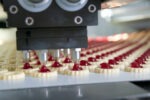Research shows CPG leaders are investing in AI and talent to stay competitive
Rockwell Automation Report finds CPG Industry prioritising innovation over cost cutting Rockwell Automation has announced the results of the 10th annual State of Smart Manufacturing Report: Consumer Packaged Goods (CPG) Edition. The findings highlight how manufacturers are placing greater importance on innovation, workforce development, and long-term growth strategies. The CPG industry is facing pressure on multiple fronts, from the growth of store brands to the demand for faster innovation and more sustainable products. At the same time, consumer loyalty is harder to earn, and expectations for customisation and transparency are rising. In response to this, CPG companies are moving away from small-scale technology pilots and investing in solutions that deliver measurable results across the organisation. The combination of workforce training, better use of data, and more adaptable systems is helping these manufacturers stay competitive while managing complexity. And as private-label brands expand and consumer expectations evolve, CPG leaders are prioritising investments that help them compete more effectively in a crowded and fast-changing market. Notable Key Trends from 2024 to 2025: Rising Competition Leads Industry Concerns: In 2024, economic uncertainty and inflation were main challenges noted in our annual survey. In 2025, competition has taken the lead, driven by increased market pressure from private-label products and changing consumer buying habits. Technology Needs to Work for People: Companies are focusing less on simply adopting new tools and more on making sure new technology fits their teams and operations. Usability and scalability are now critical factors in technological decisions. Capabilities CPG leaders are looking for in their workforce include communications/teamwork (86%), adaptability/flexibility (85%), while analytical thinking and cybersecurity practices are tied (84%). AI and Robotics Lead Investment Priorities: At the heart of technology investment decisions is a shift in thinking. 70% of CPG manufacturers say they are investing in AI, robotics, and simulation […]









